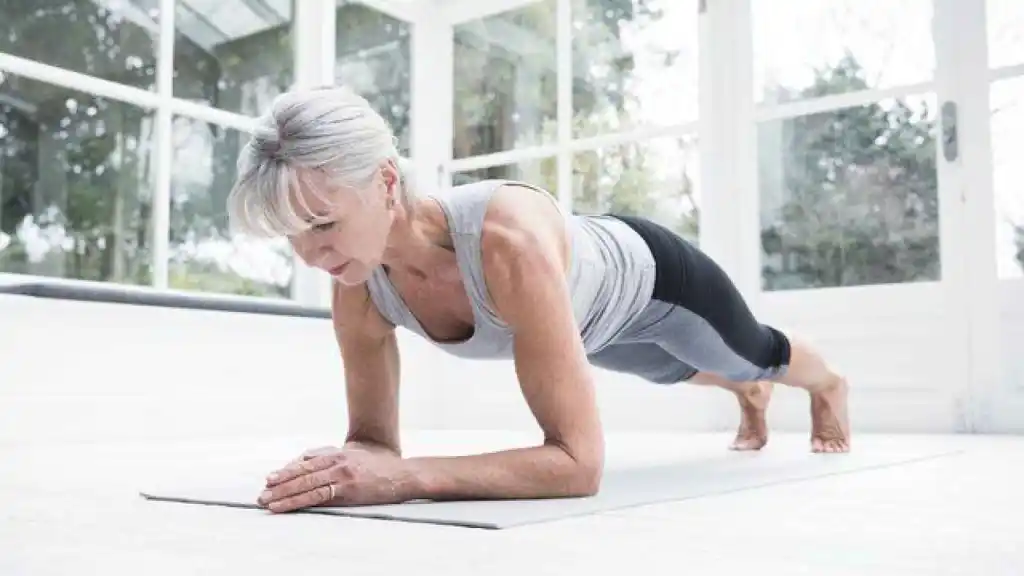
Introduction
When Instagram detects that its user is in their thirties or has already hit their forties, it promptly begins to showcase humorous reels highlighting the changes many people start to notice at these ages. More intense and prolonged hangovers, a sudden interest in indoor plants, and of course, various unexplainable aches or grunts of effort when getting up from the couch. If, according to the algorithm, physical decline begins at these ages, it almost seems normal for there to be a conception of old age as tremendously fragile. Such a conception may lead one to think that there isn’t much to be done about it.
In the realm of physical activity recommendations for older individuals, walking used to be the cornerstone. Particularly for women, at any age, the focus tended to be on cardio. Strength exercises were often forgotten, associated in the collective imagination with muscular bodies that seemed unattainable for older individuals and undesirable for women. However, this notion has been debunked in recent years: strength training is important for everyone at all stages of life, but even more so as we age.
Lidia Brea Alejo, head of the Sports and Health Department of the General Council of Colleges of Graduates in Physical Education and Sports Sciences (COLEF), points out, “There is meta-analytical evidence regarding the benefits of physical exercise aimed at improving strength.” These benefits even show “lower risks of death from any cause, from cardiovascular disease, and from cancer. Additionally, we know that it generates multisystemic benefits such as improvements in metabolism, dementia, sleep quality, bone health, depression and anxiety processes, functionality, muscular health, and tendinous and cartilaginous tissue in menopause,” she explains.
Regarding the importance of continuing to train strength (or starting to do so) as we age, the expert indicates that while aging is a natural process, pathological aging is not. “Through the practice of physical exercise, it is possible to avoid crossing the threshold of disability or delay its onset,” she asserts. Evidence suggests that resistance training can mitigate the effects of aging on neuromuscular function and functional capacity. “In this sense, it is crucial to be able to halt or prevent sarcopenia (loss of muscle mass), dynapenia (loss of applied muscle strength), or powerpenia (loss of the ability to apply force rapidly), all of which are processes associated with aging and frailty.”
Laura Esquius, a professor at the Health Sciences Studies of the Open University of Catalonia, points out some of the collateral benefits of increased muscle mass and strength: in addition to preserving functional capacity, it increases autonomy, improves stability and helps prevent falls, and enhances bone density, preventing osteoporosis and the risk of fractures.
Benefits During Menopause
Although exercising strength is positive for the entire population at any age, it was traditionally not the most commonly performed type of exercise among women, due to reasons such as “lack of scientific knowledge about its benefits and the role of gender stereotypes in strength exercise practice,” says Esquius. Cardiovascular exercise, especially in the context of weight loss and cardiovascular health improvement, was predominantly promoted.
However, the increase in bone density mentioned that is achieved with increased muscle mass is one of the reasons why strength exercises begin to be recommended in physical activity guidelines for women after menopause, when osteoporosis can become a problem. “It has been proven and observed in women that when the increase in bone mass due to physical exercise is accompanied by an increase in muscle mass, bone protection is greater,” explains Nicolás Mendoza, president of the Spanish Association for the Study of Menopause (AEEM). “Strengthening reduces sarcopenia (muscle mass deficit), which in turn reduces the risk of fracture due to osteoporosis.” Laura Esquius, from the UOC, agrees on the special importance of exercising strength after menopause, “when the decrease in estrogen can accelerate the loss of muscle mass and can cause problems such as osteoporosis, bone fragility, and risk of falls.”
During this stage, there is often also a change in fat distribution, which tends to accumulate more in the abdominal area, says Mendoza. Strength exercises can help due to their metabolic benefits. “Having more muscle mass provides you with more energy consumption. So, that central adiposity that becomes more typical from that age improves greatly because by increasing muscle mass, you have tissue that is consuming many calories,” he points out.
But that’s not all. Mendoza explains that in the working groups at the University of Granada studying menopause, they have found that physical exercise, when done in an adapted and directed manner, in groups, and combining aerobic exercises with strength training, “improves classic symptoms such as insomnia, hot flashes, palpitations, or sweating.”
When (and How) to Start
All the experts interviewed—and any somewhat recent guide consulted—insist on one key point: it is never too late to start exercising strength, even if it has never been done before. However, it is also advisable to do it correctly. “The important thing is that physical exercise, whatever type it may be, is scheduled, designed, supervised, and evaluated by professionals, in this case by Physical Education Teachers, and prescribed, if necessary, by healthcare personnel,” says Lidia Brea Alejo, from the COLEF Council. But neither age nor never having practiced any type of physical activity should be an impediment to starting.
“I have seen women with vertebral fractures and significant impairment doing crossfit, who, once past the period of soreness, gain confidence, agility, and respond better to pain medications after strengthening their backs,” exemplifies Nicolás Mendoza, from the AEEM. However, it is not necessary to start with crossfit, but with exercise adapted to our physical condition.
“In general terms, it is recommended to do strength exercises between two and four times a week, on alternate days. It is also important to consider that warming up and stretching before training is important. This promotes an increase in body temperature and the activation of muscles and neuromuscular connections, reducing the possibility of injury,” explains Esquius, who adds that strength training can be done without using machines or lifting heavy weights. “We can do several repetitions with medium or light resistances (elastic bands, weights, etc.), since the most important thing is to perform the movements correctly,” she indicates.
Lidia Brea Alejo recalls the minimum guideline set out by the WHO in its guide: “at least two times a week, work should be done on the major muscle groups, carrying out exercises that involve at least moderate intensity. This means that you can even work with your own body weight.”
Furthermore, it is not about replacing previous recommendations (walking, aerobic activity, etc.) with strength exercises, but adding them to the routine. “It is necessary to include aerobic exercise in our exercise routine, doing at least between 150 minutes and 300 minutes a week of moderate-intensity exercise or 75 to 150 minutes of vigorous-intensity aerobic exercise. It is also appropriate to include flexibility/mobility work whenever possible and to avoid sedentary behavior in daily life,” summarizes Breo Alejo.
Lastly, for the benefits of physical activity to be long-lasting, it is important to be consistent. To achieve this, Laura Esquius recommends finding “exercises that you enjoy and that adapt to each person’s abilities.” Another good idea is to participate in group activities, which not only help with adherence but are also beneficial because “you get out of the closed environment of the house and be with other people in similar conditions,” adds Nicolás Mendoza. The president of the AEEM believes that the idea that exercising strength is important is gradually sinking in, but it still needs to be emphasized that it is not just a matter of aesthetics, but above all about feeling better. “We must not only think about how we are going to shape our bodies (although looking better can contribute to adherence), but also about how we are going to improve our health,” he concludes.

